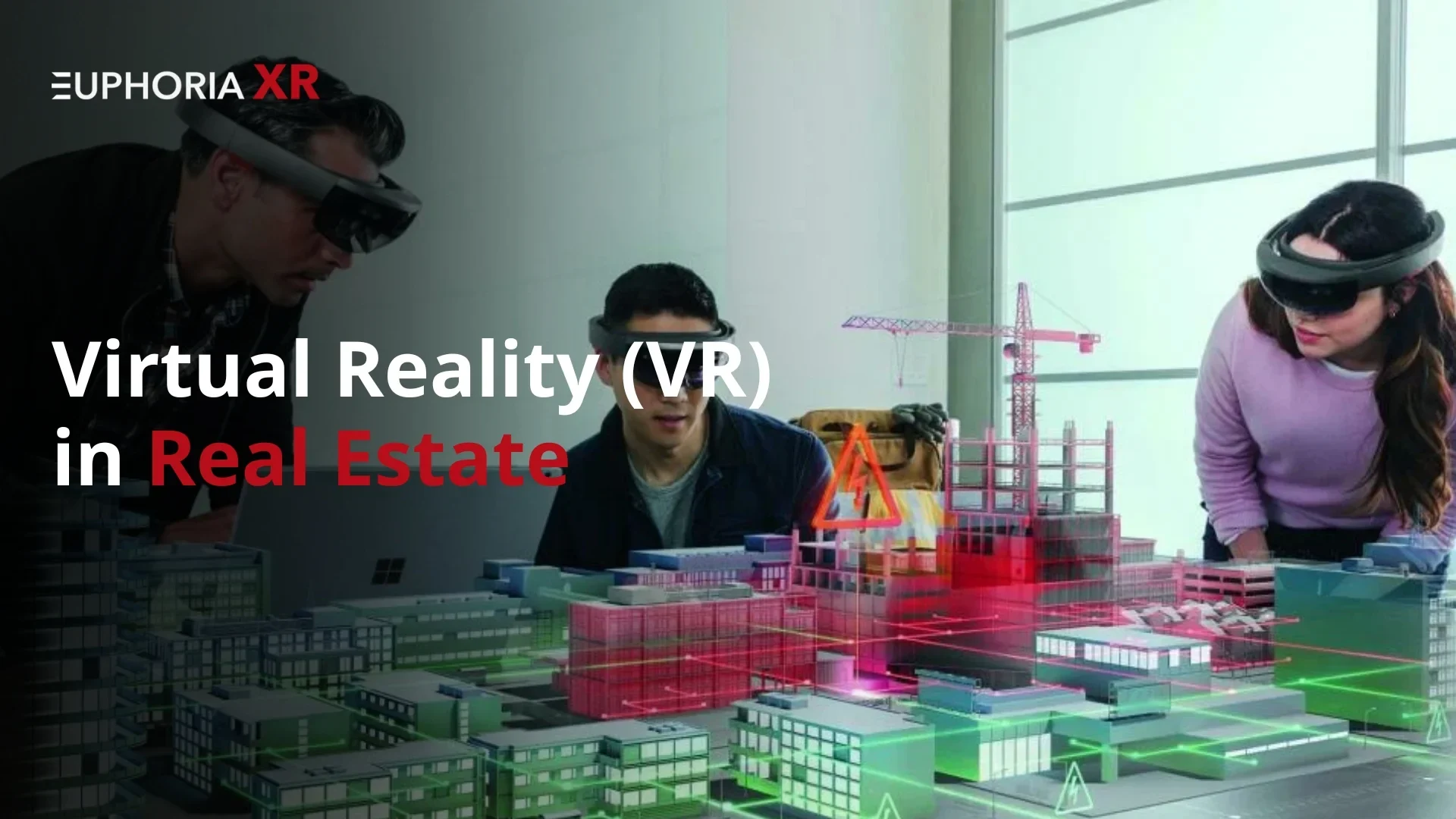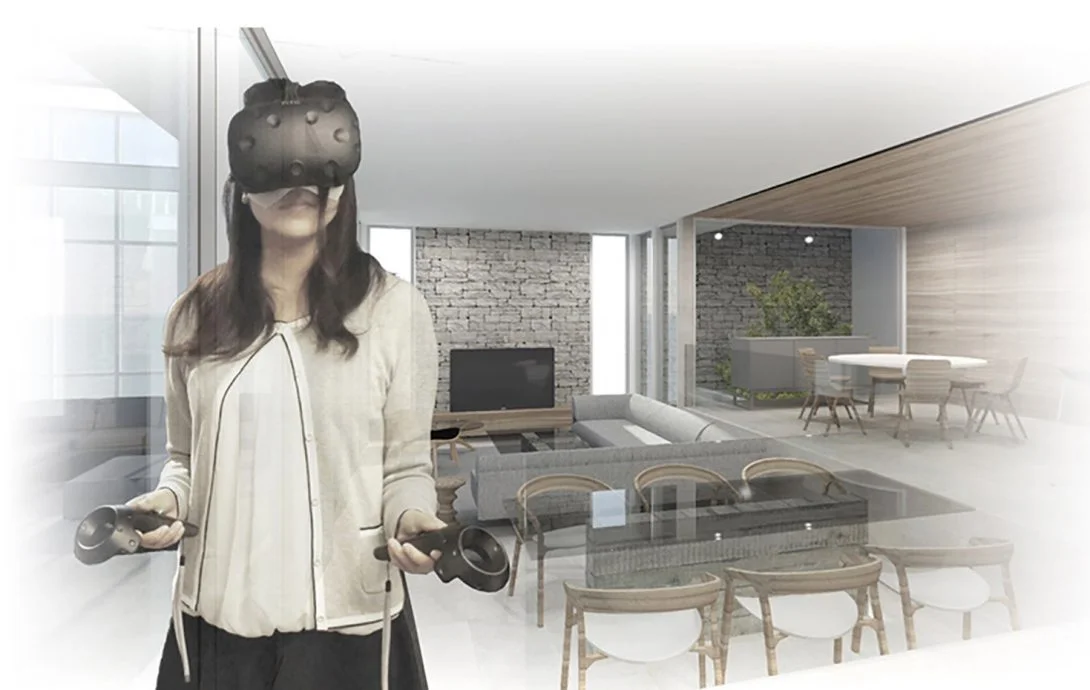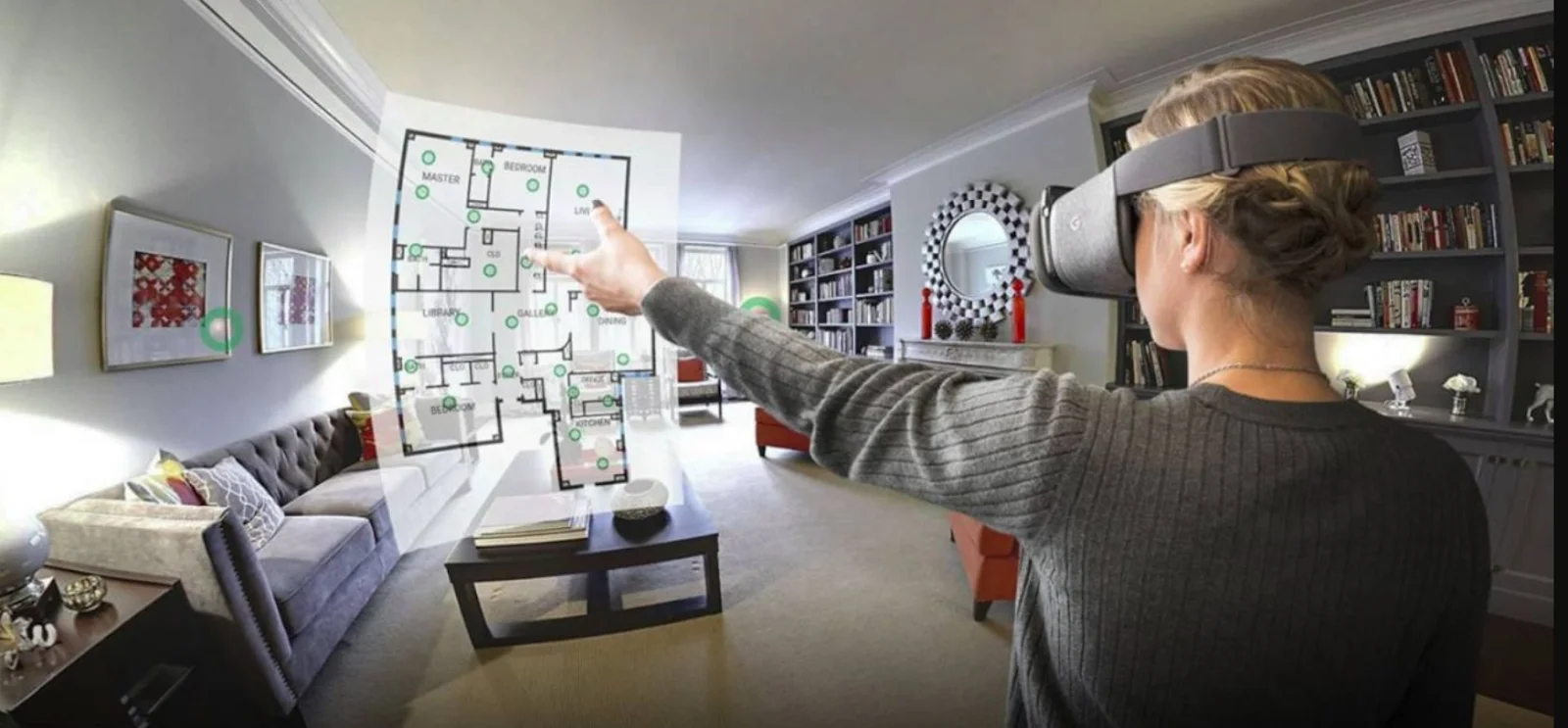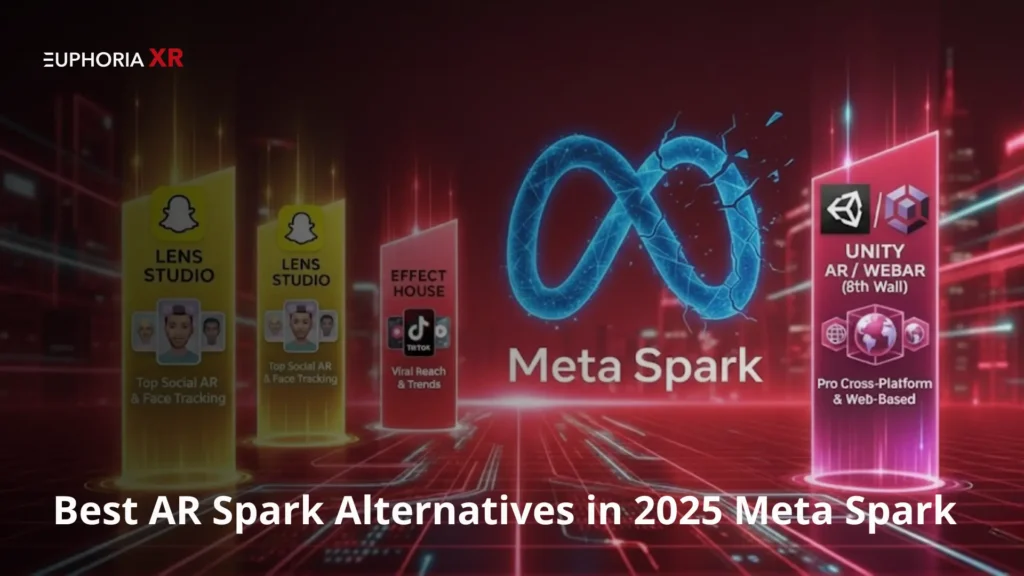“I made ten virtual house visits.”
After her house quest, that’s what my friend Lisa told me. No long drives. No uncomfortable open homes. It was just her, a cup of coffee, and a headset.
The problem is that house hunting may be very overwhelming. Tight deadlines, endless showings, and the pressure to make a major choice without truly feeling the space.
It is also annoying.
You spend hours touring houses that do not look like the pictures in the ad. Or worse, you are relying on speculation and purchasing from a different city or nation.
However, things do not have to be that way.
Virtual Reality in real estate allows you to take virtual tours of properties from any location. It is quick, engrossing, and makes you feel as though you could live there, without really entering.
Let us examine how virtual reality is influencing real estate transactions.
Virtual Reality (VR) Real Estate Market Overview
The real estate sector exists in a different form than it did in previous times. Modern technological advances have caused real estate to transform at its fastest rate in history. One of the biggest game-changers? Virtual Reality (VR).
Virtual reality exists beyond the professional boundaries of gamers. The real estate segment of VR and AR solutions will expand to $2.6 billion during the next decade based on Goldman Sachs’ market projection. Real estate agencies now utilize VR technology to conduct virtual property tours along with virtual staging and to present unbuilt buildings to potential customers. People in both roles now prefer advanced and flexible methods to establish connections in the modern era. VR provides that.
Suggested Read: https://euphoriaxr.com/vr-in-construction-training/
Benefits of Virtual Reality (VR) in Real Estate
Virtual Reality (VR) Fewer Trips to Houses
Driving for five house visits throughout one day creates a tiring experience for any person. VR resolves that. Through phone or headset connections, buyers may explore multiple properties from their family living space without leaving their home. The process saves time as well as energy costs, which enables fast elimination of unsuitable locations.
Virtual Reality (VR) Immersive Insights
A house can be properly evaluated by seeing beyond what floor plans and static pictures can show. Virtual Reality enables users to experience spaces by maintaining their height while they move between rooms to observe the actual space configuration. A deep level of property detail provides customers with definitive insights about each house under consideration.
Virtual Reality (VR) Saved Costs
The process of dwelling staging using traditional methods typically amounts to expenses exceeding hundreds to thousands of dollars. Digital staging delivers this function through VR technology. By using virtual reality, agents demonstrate renovated rooms as well as design plans and renovations while maintaining the original furniture layout intact. The method saves financial resources for those who buy properties and their real estate agents.
Virtual Reality (VR) Sense of Ownership
VR tours serve the dual purpose of visual presentation, followed by a potential homeowner’s visualization of residing within the property. Detailed exploration of a space allows people to develop personal emotions toward the property. Such emotional connections move people toward both accelerated buying choices and more robust proposals.
Virtual Reality International Coverage
Traditional home purchases across different cities and countries used to be highly risky. The implementation of VR technology now lets international purchasers experience properties by seeing them from an actual space, like someone who is physically inside. Through this technology, investors from around the world can join the market, as well as distant movers who do not sacrifice viewing quality.
Use of Virtual Reality(VR) in Real Estate
Virtual reality serves more than visual purposes because it operates as a critical instrument that transforms property selling, market promotion, leasing processes, and property maintenance systems. The appropriate virtual reality implementation turns basic listings into dynamic, unforgettable virtual spaces.
The following paragraphs explain how Virtual Reality transforms real estate transactions through beneficial experiences for property buyers and sellers and their real estate agents.
Virtual Property Presentations
The new generation of home viewing technology enables users to walk through properties in real-time, interactive three-dimensional spaces rather than viewing previous format static content. In VR, users navigate the space to examine every area of the layout, along with many returns to any singular room, like physical inspection. The increased control rate allows them to participate actively, thus creating a deeply personalized feeling during their experience. Virtual property tours operated by agents can be accessed around the clock, even when they rest, because of this technology.
Staging and Virtual Visualization
The process of home staging strongly contributes to home sales, but its costs are high. Through virtual real estate applications, realtors gain the capability to conduct virtual house furnishing tasks alongside home interior redesign functions and wall decoration inspection features. The online experience lets proprietors visualize interior designs as they move from room to room. The property owner can visualize how their furniture would fit inside their living room space as they browse digitally. The space surrounds buyers emotionally when they visualize the space through this technology.
Virtual Commerce(V-Commerce)
The ability for homebuyers to discover attractive light fixtures during online tours while completing instant purchases in the virtual space is a revolutionary concept. That’s v-commerce. Virtual retail services unite both the process of purchasing things with the process of selecting real estate properties. Real estate professionals should collaborate with furniture or decor brands to develop interactive showrooms from virtual tours. Combining V-Commerce with real estate tours turns into an additional income source while enhancing customer interaction in the buying process.
Virtual Instructions for Tenants
After signing a lease, the landlord-student relationship maintains its continuous nature. Virtual Reality has become a standard tool for property managers to guide new tenants through house functions, including how to adjust thermostats and activate boilers, or locate circuit breakers. The virtual orientation tours decrease tenant support requirements while building tenant confidence about their new housing environment.
Virtual Architectural Visualization
The real estate market accepts the sale of properties that are still under construction. VR bridges that gap. Through virtual reality, developers, together with architects, build 3D complete versions of future residential and commercial designs for actual site exploration. Potential investors and buyers can interact with the designs exactly as though these structures already exist by checking out their room layouts, lighting features, spacing measurements, and external surroundings. Commercial developments, together with early buying opportunities, benefit extensively from this technology.
Virtual Bike Tour
Individuals obtain houses as a means to acquire specific lifestyles. The virtual biking or walking experience allows prospective buyers to navigate the surrounding area of the property. Through the virtual bike tour, they can virtually experience local parks along with schools, and coffee shops, together with community features in the area. The additional layers in the buying process enable potential buyers to construct mental images of their future existence in their new location.
Capture Dimensions and Create Floor Plans
Virtual reality equipment performs automated scanning of rooms to create proper floor plans that include precise measurement data in real-time. Real-time measurement capability helps both buyers who want to check furniture dimensions, along with interior designers who need to establish layout designs. The virtual layout builds trust between buyers since the digital representation matches exactly with the actual physical space.
Property Maintenance and Remote Troubleshooting
Property managers, along with landlords, utilize VR technology as an intelligent solution for property maintenance. Virtual reality technology allows users to provide virtual assistance to plumbers by pointing out leaks from separate locations. Maintenance personnel get access to building system overviews through VR technology, as well as using it to record inspection data and generate operational plans. An online venture brings efficiency through a combination of saved funds and minimized confusion with efficiency in time usage.
The real estate industry uses virtual reality throughout its operational segments, including first property viewings and subsequent service delivery to tenants. The tool helps customers choose better properties because it lets retailers have an advantage in competition while reducing the duration and work required by all parties.
Allow your customers to explore at any time and from any location.
Get in touch right now to find out how VR can improve your listings.
Considerations for Building a VR Real Estate Experience
You want to introduce VR technology to your real estate business, which is an excellent decision. Before implementing the VR experience, you need to consider several essential elements that will guarantee a smooth operation with high impact and genuine help for your clients.
First, you need quality visuals.
VR is all about immersion. Fuzzy images and shaky 3D representations will not produce the desired effect for this user experience. Professional businesses offering virtual reality photography services should handle camera acquisitions, or clients should spend on 56-degree resolution technology. Excellent photo quality produces an experience that both convinces users and keeps them entertained.
Second is the ease of use.
The VR platform must deliver effortless accessibility, which includes headset as well as tablet or smartphone-based consumption. Avoid overcomplicated navigation. The need to solve an unclear method typically leads people toward an immediate exit.
Third, consider device compatibility.
Check if your VR content operates seamlessly between iOS, Android systems, desktop computers, and both Oculus and HTC Vive VR headsets. Your target audience needs full freedom of exploration because they should be able to navigate using any technology they already own.
Fourth, integrate helpful features.
The primary advantage of an excellent virtual reality tour lies in its ability to engage users beyond viewing alone. The integration of hotspots with details about rooms, audio guides, and real-time agent support through a live chat feature should be present in your VR content. Users become active leads after viewing features that combine mortgage calculator functionality with virtual floor planning and “book a showing” scheduling buttons.
Load speed constitutes the last important factor to consider.
The extensive size of VR files creates loading issues that degrade the entire user experience because of slow performance. Achieve optimization through tools and partner with high-speed, trustworthy platforms that prevent users from experiencing long loading durations.
An Example of How a Virtual Reality (VR) Real Estate App Might Look
A customer accesses the real estate application through their mobile device. Users navigate away from picture galleries by selecting the “Explore in VR” button. As they tap the screen, the user appears instantaneously in the well-furnished living room of the property.
The app user makes a left-hand turn to view the kitchen and progresses forward toward the backyard while activating pop-up indicators that show “renovated in 2023” and “energy-efficient windows”. Users can locate a “Speak to an Agent” function within the corner that enables them to get quick answers through voice or chat support.
The viewer examines the second bedroom space. Not what they’re looking for? A single swipe allows users to access a different listing page.
The users managed to survey three properties along with requesting two inquiries, and mark down one listing as a potential favorite using their smartphone in only 10 minutes.
Modern buyers expect businesses to provide this kind of smooth dialogue between sellers and potential customers every day.
Do you want to experience real estate to the fullest? Partner with a leading Virtual Reality Development Company like EuphoriaXR!
Summing Up
Virtual reality in real estate is more than just a trendy term; it is quickly becoming a necessary tool for developers, agents, and property managers. It reduces time waste, strengthens emotional bonds, and makes real estate available to purchasers worldwide.
The moment to embrace virtual reality is now if you work in real estate. Virtual reality can change how you work and how others view houses, whether you are promoting homes to out-of-town purchasers, assisting renters with their move, or showcasing a new construction.
Virtual real estate is the way of the future.
Additionally, in a crowded market, you will stand out more quickly the sooner you take advantage of it.

















